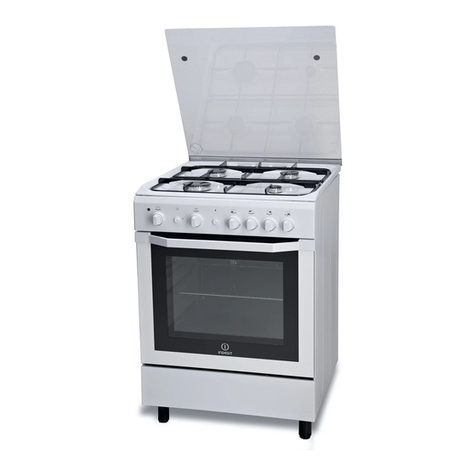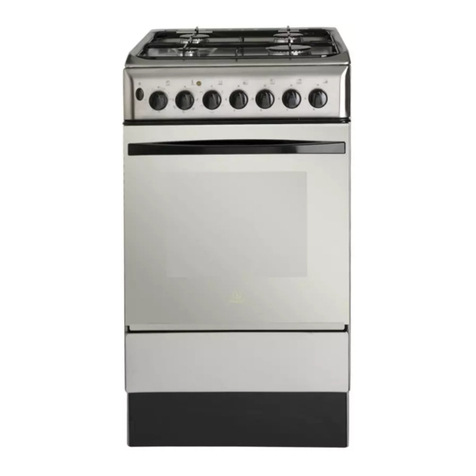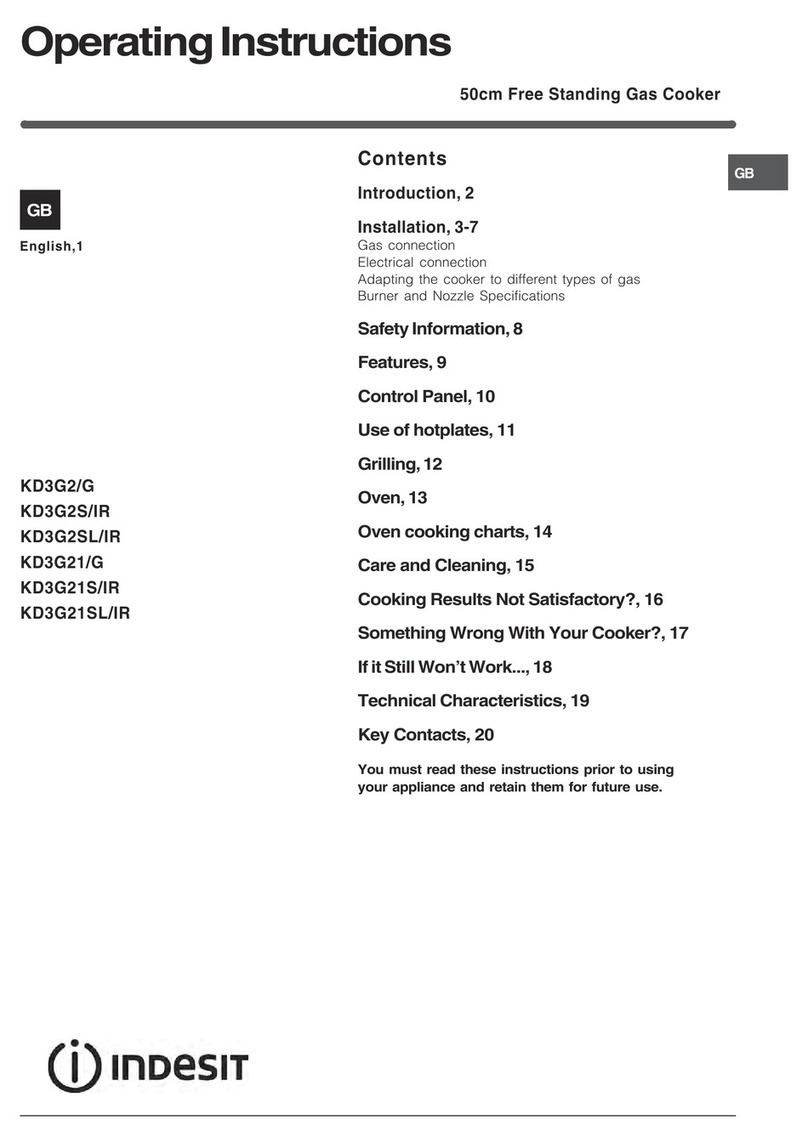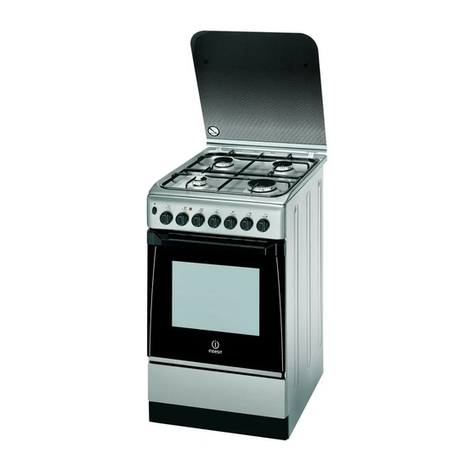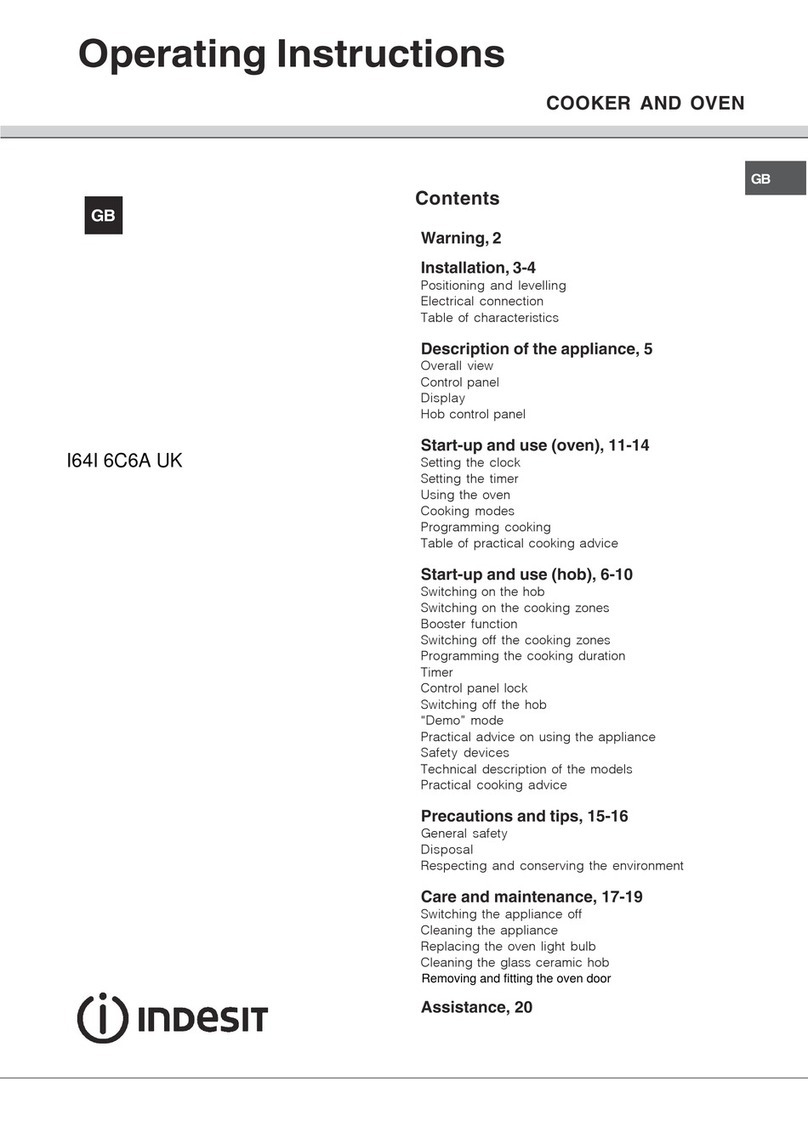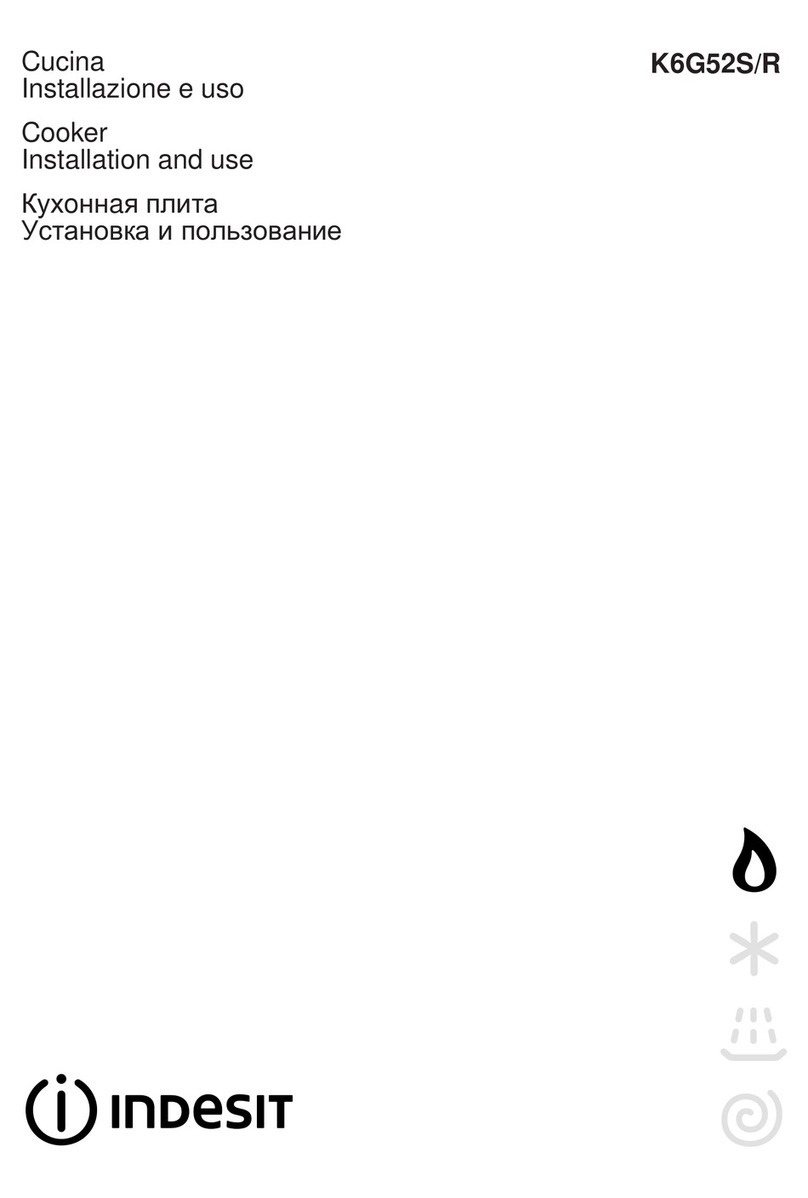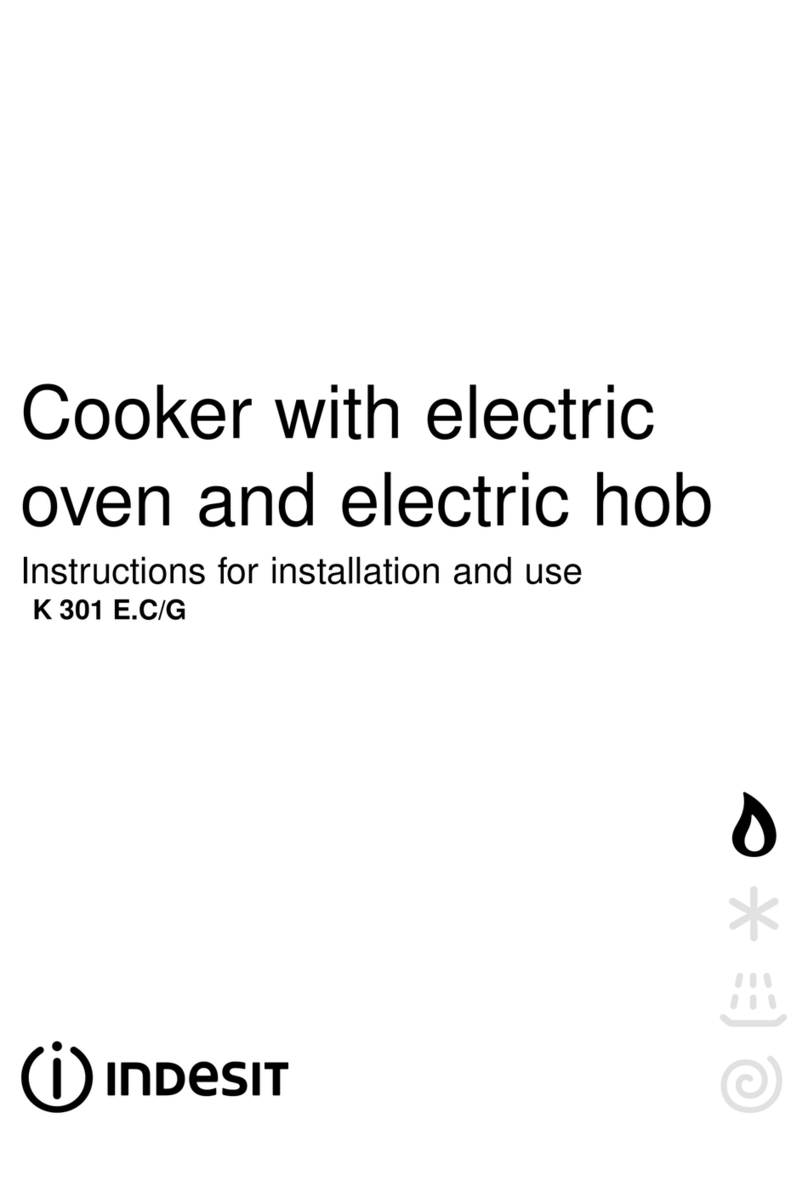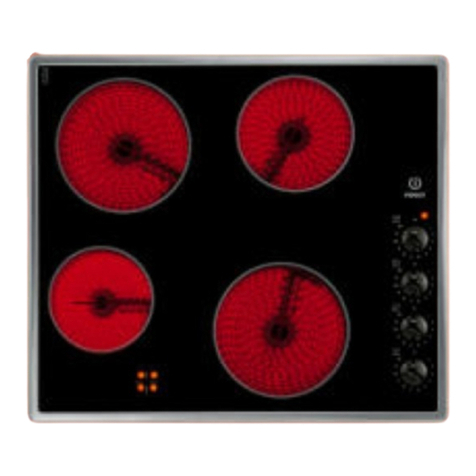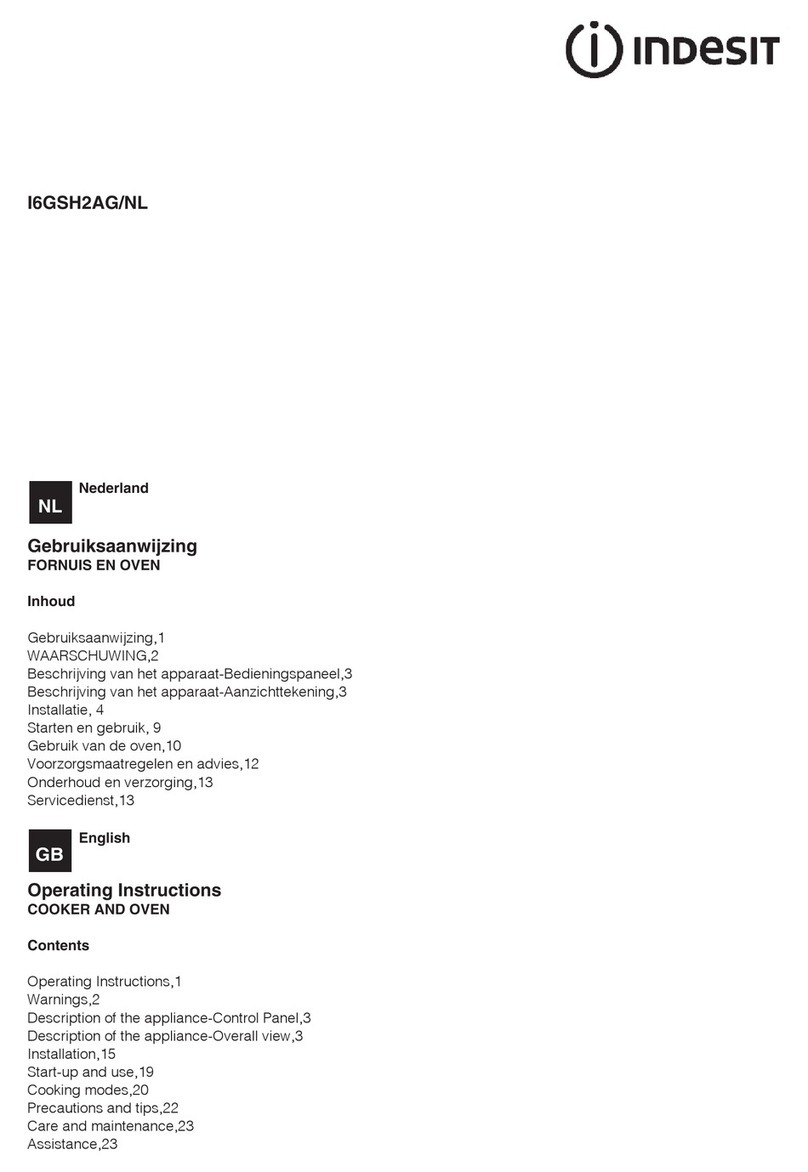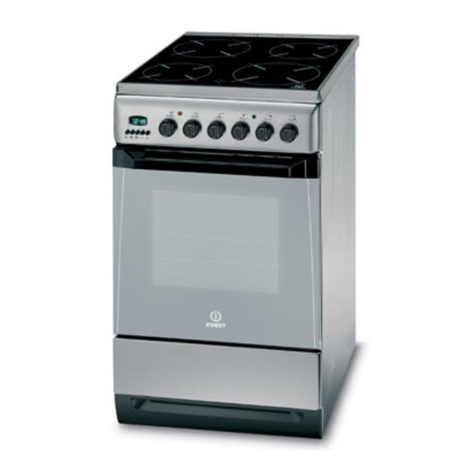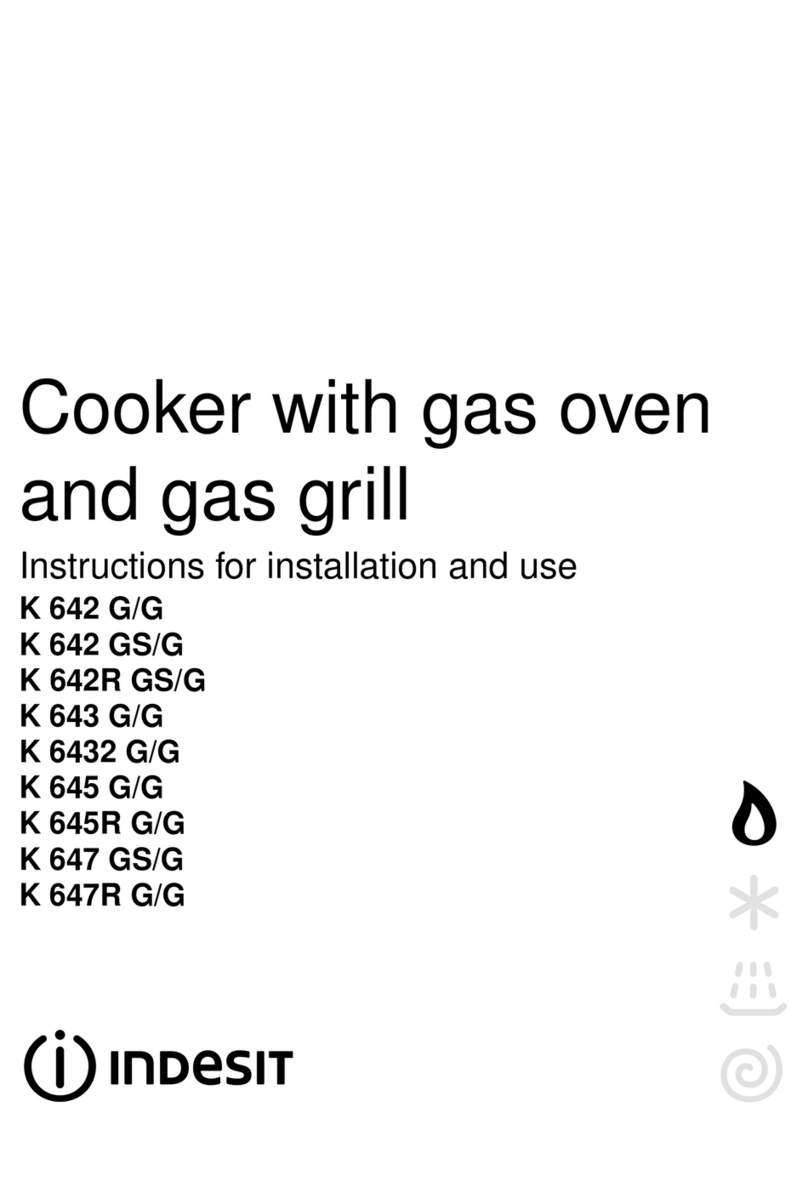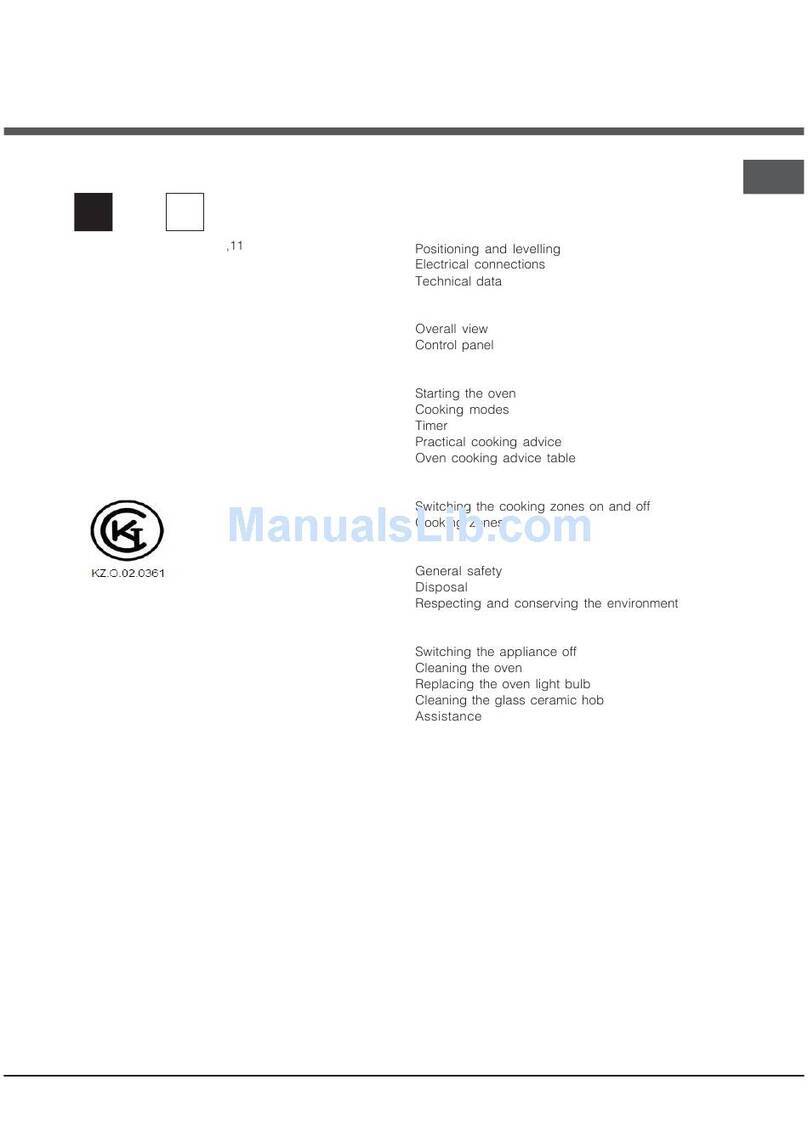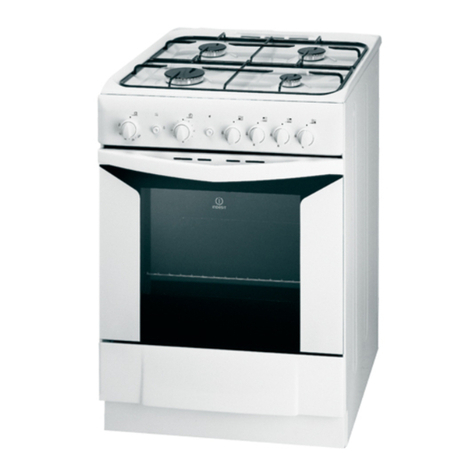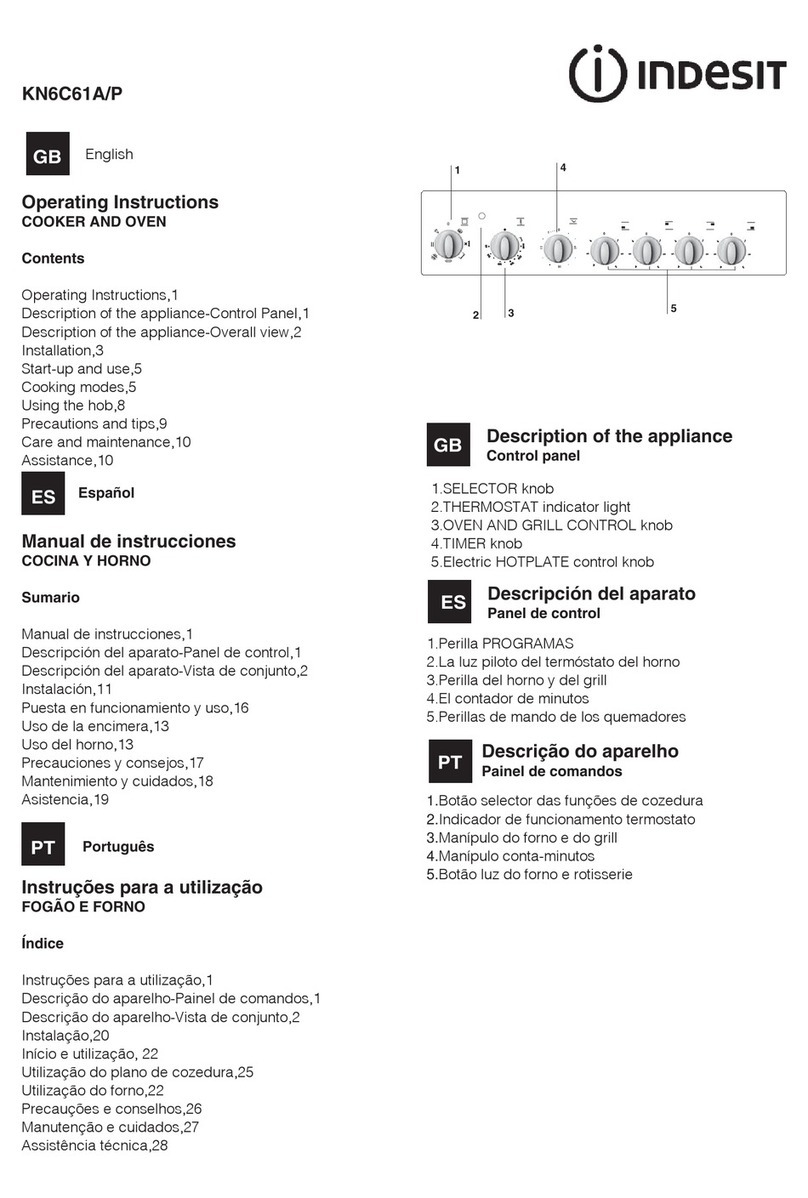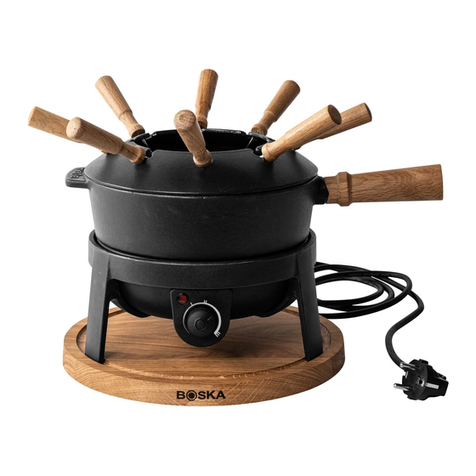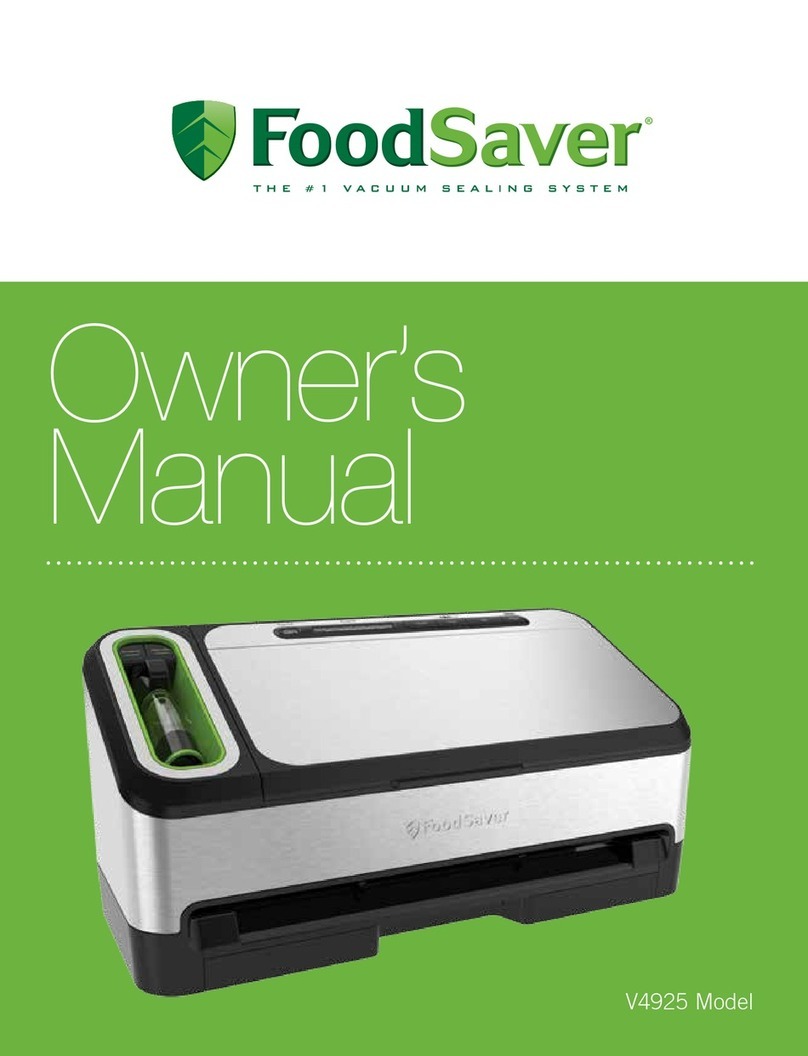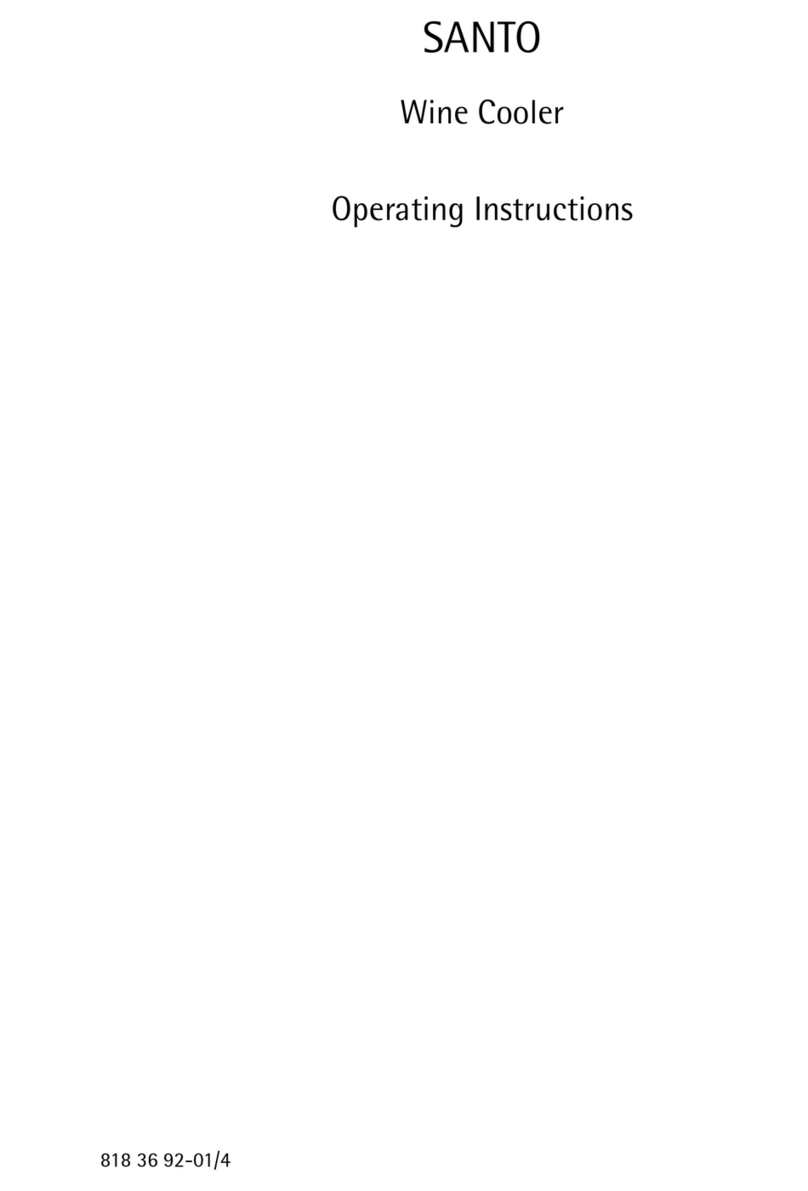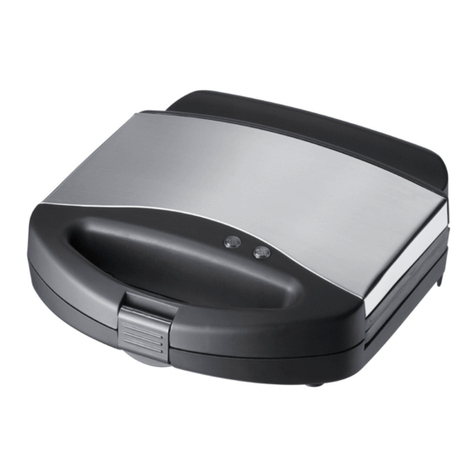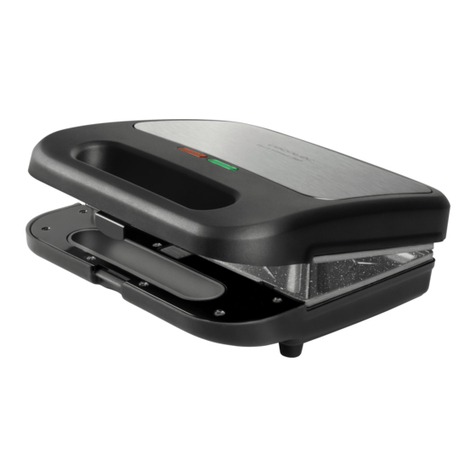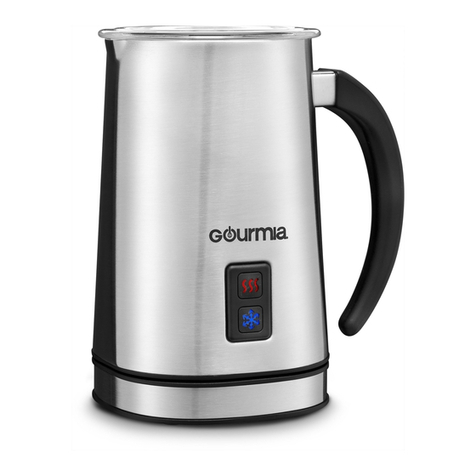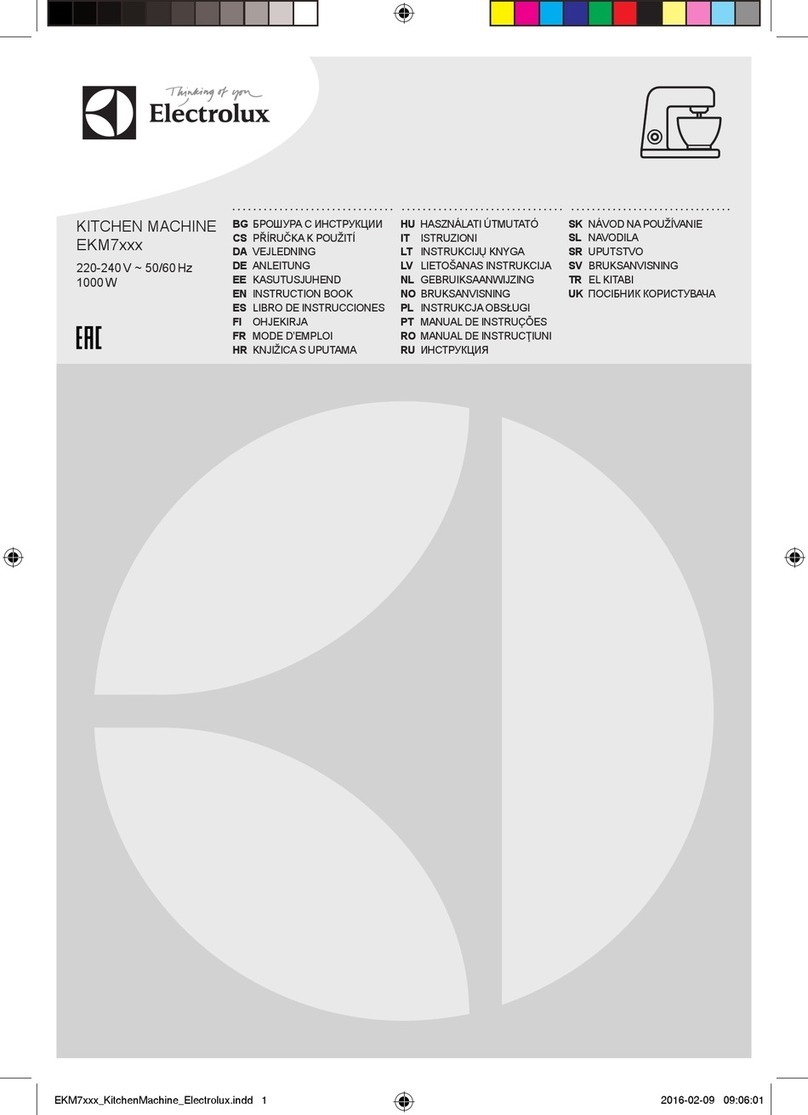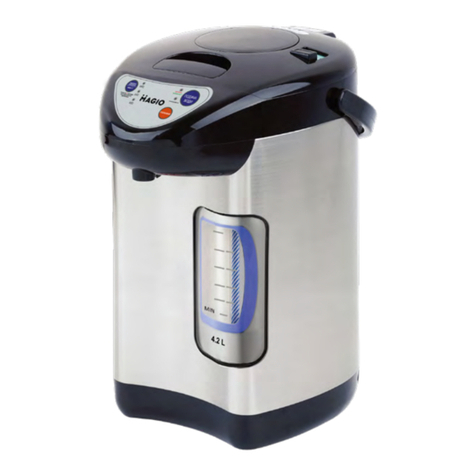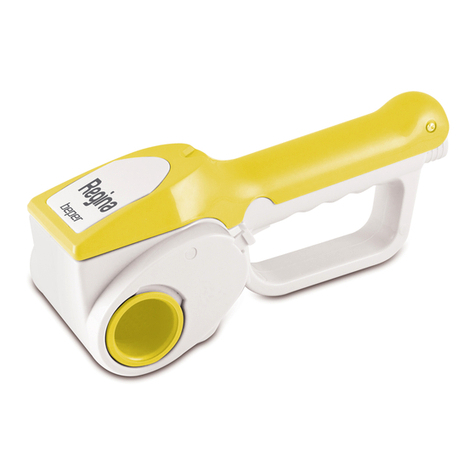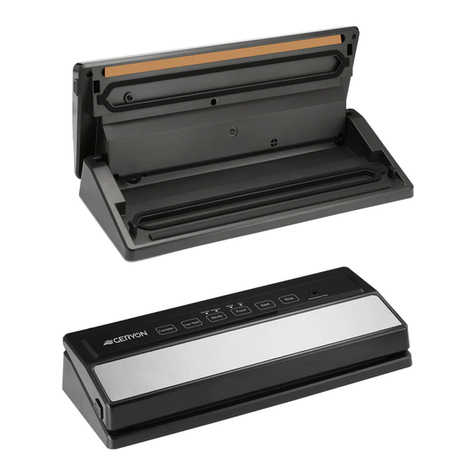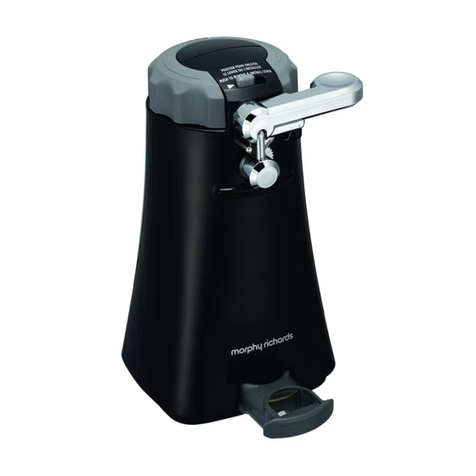7GB
A
fig.10
fig.9
fig.8
Gas supply connection
• Checkthat theappliance isset forthe typeof gasavailable
and then connect it to the mains gas piping or the gas
cylinder in compliance with current regulations and
standards.
• This appliance is designed and set to work with the gas
indicated on the label situated on the actual hob.If the gas
supply is other than the type for which the appliance has
beenset,proceed with replacingthecorrespondingnozzles
(provided), following instructions given in the paragraph
“Adaptation to different types of gas”.
• Fortrouble-freeoperation,suitableuseof energyandlonger
life of the appliance, make sure that the supply pressure
complies with the values indicated in the table 1 "burners
and nozzles specifications, otherwise install a special
pressure regulator on the supply pipe in compliance with
currentstandards andregulations.
• Connect in such a way that the appliance is subjected to
nostrain whatsoever.
Either a rigid metal pipe with fittings in compliance with the
standards in force must be used for connecting to the nipple
union (threaded ½"G male fitting) situated at the rear of the
appliance to the right (fig.8), or flexible steel pipe in
compliance with the standards in force, which must not
exceed 2000 mm in length.
Shouldit benecessaryto turnthe fitting,the gasket (supplied
with the appliance) must be replaced. Upon completion of
installation, check the gas circuit, the internal connections
andthe tapsfor leaksusing asoapy solution (nevera flame).
Alsocheck that theconnecting pipe cannotcome intocontact
with moving parts which could damage or crush it.
Makesurethatthe naturalgaspipeisadequate forasufficient
supply to the appliance when all the burners are lit
Important: A pressure regulator, in compliance with the
standards in force, must be inserted when connecting to a
liquid gas supply (in a cylinder).
Adaptation to a different type of gas
If the hob is to be converted for use with a type of gas other
than that for which it was set in the factory (indicated on the
label to be found on the hob), the burner nozzles should be
replacedas follows:
• Remove the pan supports and the burners.
• Unscrewthenozzles“A”(fig.9) using a7mmsocketwrench
and replace them with the ones which have a diameter
suitable for the type of gas to be used, according to the
table 1 "burners and nozzles specifications).
• On completing the operation, replace the old rating label
with the one showing the new type of gas; the sticker is
availablefrom our ServiceCentres.
Adjusting the low flame
• Put the tap to the low flame position (the burner should be
lit);
• Remove thetap knob(fig.10) andturn theadjusting screw,
situated to the side of the tap stem, using a screwdriver
(loosening the screw increases the height of the flame,
tightening decreases it).
note: the adjusting screw must be fully screwed down for
liquid gas.
• Having obtained the low flame setting required and with
the burner lit, abruptly change the position of the knob
several times from minimum to maximum and vice versa
and check that the flame does not go out.
• Refit the tap knobs
If an electric fan is used for extracting the combustion
products,theventilationaperturemustbeincreasedinrelation
to its maximum performance.The electric fan should have a
sufficient capacity to guarantee an hourly exchange of air
equal to 3-5 times the volume of the kitchen. Prolonged,
intensive use of the appliance may require extra ventilation,
e.g. an open window or a more efficient ventilation system
by increasing the extraction power of the electric fan if
installed. Liquid petroleum gas descends towards the floor
as it is heavier than air. Apertures in the outside walls in
roomscontaining LPG cylindersshould therefore beat floor
level,in order toallow any gas from leaksto be expelled. Do
not store LPG cylinders (even when empty) in basements/
rooms below ground level; it is advisable to keep only the
cylinder in use in the room at any one time and connected
far from heat sources which could raise its temperature to
above50°C.
THE APPLIANCE MUST BE EARTHED
The hob is designed to work with alternating current at the
supply voltage and frequency indicated on the rating plate
(situatedunderthehoborat the endoftheinstructionbooklet).
Make sure that the local supply voltage corresponds to the
voltage indicated on the rating plate.
Connecting the supply cable to the mains electricity
supply
The supply cable must be in such a position that no part of it
can reach a temperature of 50 °C above room temperature.
For installation above a built-under oven, the hob and the
oven must be connected separately to the electricity supply
both for safety reasons and for easy removal of the oven if
necessary.Donot useadaptersor shunts astheycould cause
heating or burning. Before connecting to the power supply,
make sure that:
• the limiter valve and the domestic system can withstand
the load from the appliance (see rating plate);
ELECTRICAL CONNECTION
